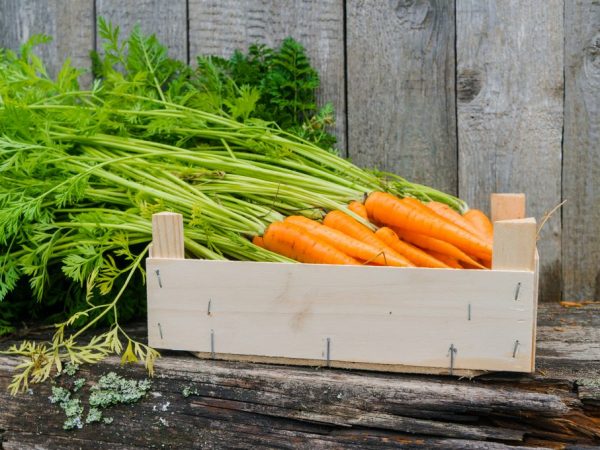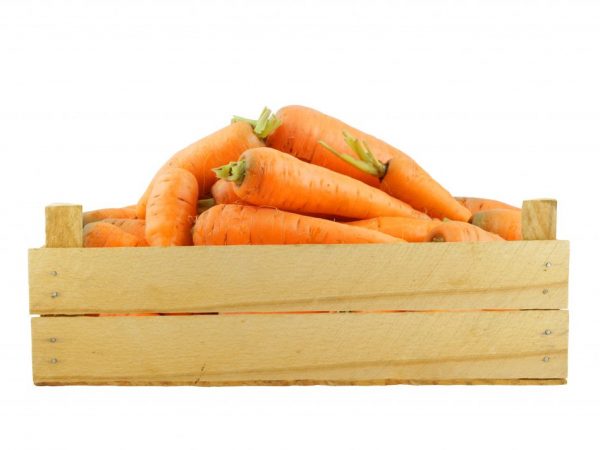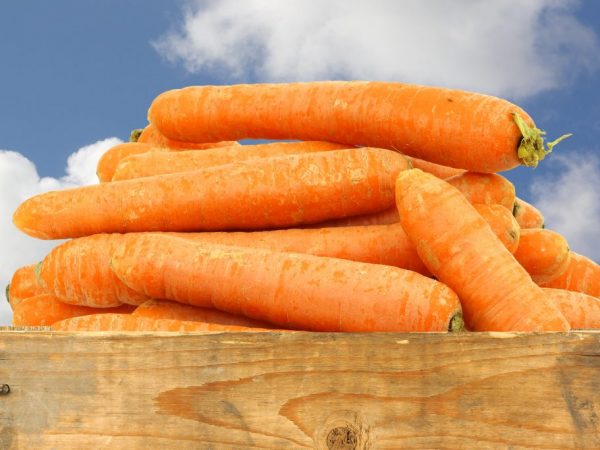Ways to store carrots for the winter
The main task of every gardener is to provide optimal conditions for long-term and high-quality storage of the crop. Storing carrots for the winter in a basement or cellar is done in several ways.

Ways to store carrots for the winter
Variety selection
If there is a basement at home, you can store any kind of root crop in it, but the storage periods will be different. The storage duration depends on the conditions of the crop and the characteristics of the variety.
There are several hybrids designed for long-term storage of carrots in the cellar. They spoil less than other varieties and retain their original flavor and color:
- Moscow winter. This hybrid has excellent taste and is intended for storage in a cellar, basement or underground. Refers to mid-season varieties.
- Nantes. Possesses excellent taste and good keeping quality of root crops. If the plants are properly cared for, the harvest will be of high quality and with a long shelf life.
- Shantane. Mid-season, high-yielding hybrid. Root vegetables are sweet, crunchy, with a pronounced aroma.
No less popular among gardeners are the varieties Nigel, Samson, Cascade and Vitamin 6.
Harvesting
Before storing carrots for the winter in the cellar, a number of preparatory works are carried out for cleaning and harvesting:
- Root crops can not be pulled out; they use a pitchfork to remove them from the soil.
- The dug up roots are laid out in the garden so that they warm up and dry out in the sun. If the weather is cloudy and damp outside, the crop is brought under a canopy and laid out on an awning. Drying is carried out within 2-3 days.
- Carrots should be stored in the cellar in winter in their pure form, without residues of earth.
- For the bookmark, only whole root crops are selected, without rot and scratches.
- Cut, broken and rotten vegetables are used first.
- Large root crops are separated from small ones, since they have a longer shelf life. First of all, small carrots are used.
- The tops are cut so that a small tail remains about 2 cm long.
Premises preparation
It is important not only to choose a good variety and to prepare the harvest with high quality, but also to prepare the premises for its safety.
The main requirements for the room:
- temperature regime in the range from -2 ° С to 2 ° С;
- high humidity (90%);
- the possibility of airing.
In the storage facility, where the fungal infection has formed, sulfur checkers are used to destroy it. For the purpose of disinfection, the walls are treated with slaked lime.
Storage methods

Create optimal conditions for vegetables
There are several ways to save carrots for the winter at home in the basement, provided that the requirements are met. Today, 8 of the best storage methods are used.
In a cardboard or wooden container
In such a container, vegetables are stored with or without filler.
Clean and selected root crops are placed in cardboard or wood boxes. Laying is done in layers, after which the container is covered and placed at a height of 15 cm from the wall. So from the surface sweaty from below, moisture will not get into the container with root crops, which will eliminate the risk of rotting vegetables.
The second option, how to save this vegetable, is no less practical. Vegetables are stacked in rows in boxes. A sand layer is placed on top. No more than 20 kg of root crops are placed in one container. So the carrot does not rot or spoil.
Sand-chalk mixture
There is another effective way to store carrots in the cellar in winter: with the help of chalk and sand. Mix both components, moisten with a sprayer. For such storage, containers without cracks and holes are used. The vegetable is laid as it grows in the garden: standing. All voids are covered with the prepared mixture.
In the same way, it is really possible to save other root crops: beets, potatoes.
Chalk solution
Chalk is dissolved in water to a mushy mass. Then each root crop is lowered into this mass, dried and folded into a wooden or cardboard box. Sprinkle each layer with wet sand.
It is good to store carrots in the basement in winter, dusting them with chalk. A glass of white powder is consumed on a bucket of root vegetables.
Storage benefits:
- this natural material has an alkaline property, which means it prevents the development of pathogenic bacflora on vegetables;
- a vegetable in chalk remains crispy, dense and juicy for a long time.
In needles sawdust

You can keep carrots fresh for a long time
The composition of sawdust of coniferous trees contains phenols, which prevent root crop rot. It is easy to store carrots in the basement in this way: from the gardener you need to get dry sawdust and a box of wood or cardboard, lay the root crops in layers in the prepared container, sprinkle each layer with sawdust.
In a large room, sawdust is poured onto a shelf, the roots are laid and the layers are repeated in this way until the vegetables run out. A distance of about 10 cm is left between the sawdust and the wall.
In bags with onion skins
When peeling onions, do not throw away the husk: it will come in handy for pouring root crops. The husk is placed at the bottom of the bag, then a layer of root crops is poured over. In such an environment, carrots do not rot and are not damaged by parasites.
The bags are tied, hung or placed on a shelf.
Sand pyramid
Storing carrots in a cellar in this way in winter will require a small supply of moist sand. It is poured in the place chosen for storing the crop. Then a layer of root crops is laid in one order, covered with sand. Lay the second layer across and fall asleep again. This is done until a height of 1 m is reached.
During storage in this way, it is worth monitoring the condition of the sand. If it dries up, it is moistened with a spray bottle.
In clay solution
Nobody wants to mess with clay: it's dirty work. However, it is better to store carrots in the cellar this way.
Clay is poured into a spacious container, filled with water, stirred. You should get a thick, homogeneous mixture. Roots are placed in it, mixed so that the clay mass is evenly distributed on the surface of the vegetables.
Carrots are removed, laid out on a tent. After it dries, it is placed in any container for storage.
The carrot, wrapped in a clay layer, is well preserved: it remains juicy, crisp for a long time, does not wither and does not dry out.
Cellophane
Correctly store carrots in the cellar and in cellophane, while observing the following conditions:
- root vegetables are well dried and cooled before packing in bags;
- so that moisture does not accumulate in the inside, several holes are made from below in the bags, the top is tightly tied;
- all packed bags are placed on a shelf, and not on the floor, otherwise rotting of carrots cannot be avoided;
- from time to time monitor the status of the content in the packages.
In case of accumulation of moisture, the roots are removed from the bag, dried and placed in another container.
Storage duration
The shelf life of root vegetables depends on the preferred method. Gardeners cite the following figures:
- in containers with sand, in a sand-chalk mixture, coniferous sawdust and a clay shell, the shelf life of carrots is one year;
- in the form of a pyramid and in a closed container, root crops are stored for about 6-8 months;
- in cellophane - from 60 to 120 days;
- in a refrigerator and in room conditions - no more than 2 months.
Conclusion
Knowing how to properly store carrots in the cellar in winter, you will be able to enjoy juicy, tasty and crunchy vegetables all year round. The main thing is to use peeled, dried and high-quality vegetables without damage or rot.


